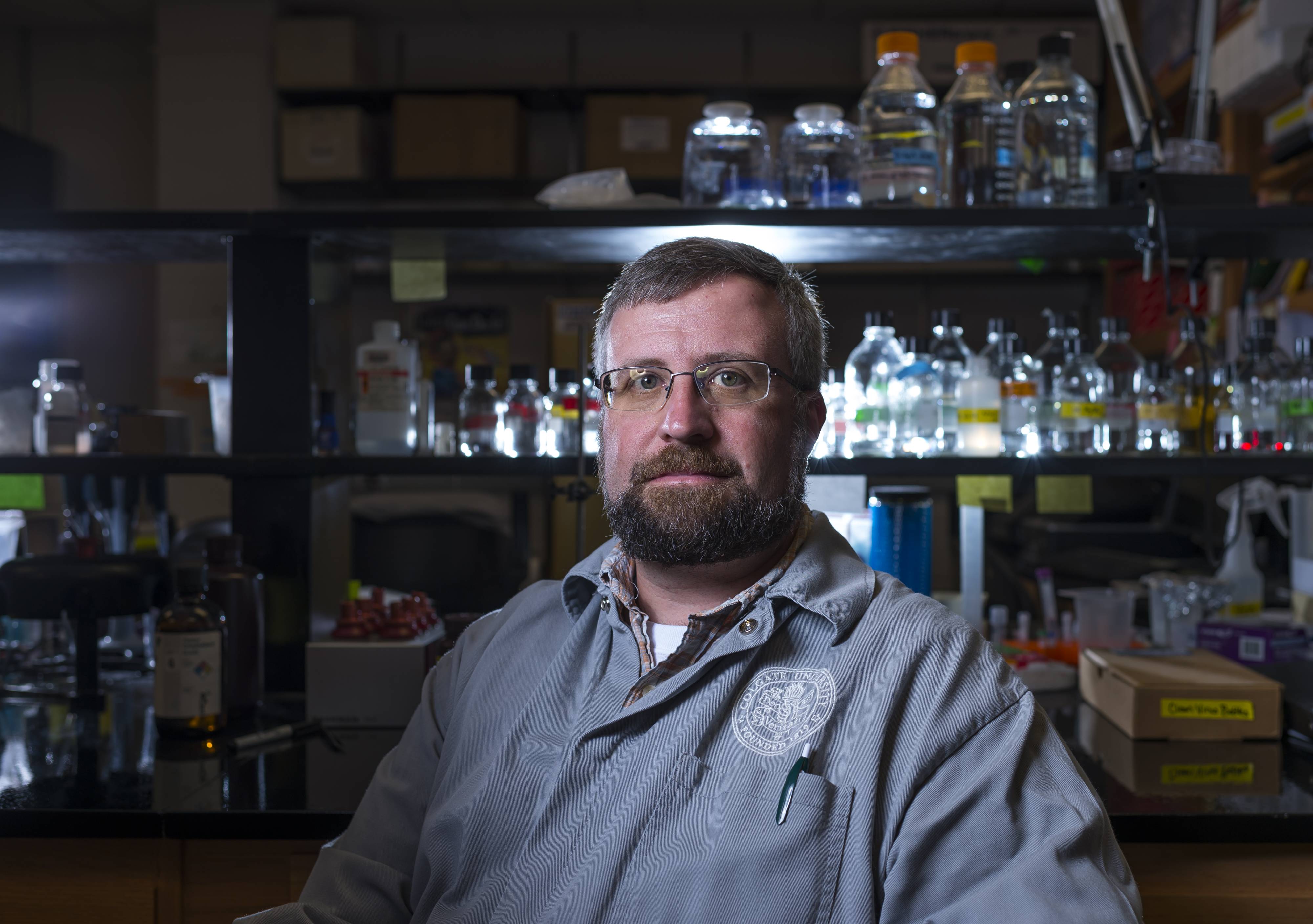My teaching interests run the spectrum from basic molecular and cellular biology to virology and immunology and to the pathogenesis and epidemiology of infectious disease.
Currently, I contribute to Biology 182: Molecules, Cells, and Genes, in addition to the following courses:
Core Scientific Perspectives 117: Outbreak! Historical Pandemics and Emerging Infectious Diseases. This course examines three historical epidemics: the “Black Death;” cholera in London in the 1850's; and 1918 “Spanish flu,” and some more recent outbreaks, including SARS and the H1N1 influenza pandemic. Through lecture, discussion, and in-class exercises, these outbreaks are used as a framework for investigation into basic epidemiological principles. We investigate different methodologies of epidemiologic data collection, and analyze data sets derived from various outbreaks. We also discuss the microbiologic, social, and environmental factors that contribute to disease pathogenesis, and examine our current preparedness for future infectious outbreaks.
Biology 205: Cell Biology. Cells are the basic units of life. This course uses the study of cell biology to explore the collaborative process of scientific research, the critical reading of primary literature, the design and implementation of experimental studies, and the interpretation and communication of research results. Course topics include regulation of the cell cycle and cell division, cell structure and motility, inter- and intracellular communication, and organelle structure and function. Students learn how to critically read and evaluate primary journal articles and will integrate content from the course and published literature into multi-week, lab-based investigative research projects.
Biology 313: Microbiology. Microbiology is an incredibly broad field, loosely defined as (but not limited to) the study of organisms that require a microscope to visualize, or “microbes.” This broad classification includes the subfields of bacteriology, virology, parasitology, and mycology (among others), but has also traditionally included other disciplines, such as immunology and epidemiology, that are directly relevant to the study of microbes. Additionally, microbiology encompasses studies of microbes at levels ranging from genetics and molecular biochemistry to cellular physiology to organismal pathogenesis to global ecosystem ecology. This course aims to introduce or expand on many of these aspects of microbiology, and is loosely grouped around six themes: Microbial Principles, Microbial Genomes, Microbial Metabolism, Microbial Ecology, Microbial Diversity, and Medical Microbiology. The required laboratory component of the course aims to integrate many of these topics, and illustrate some of the principles and techniques used in the study of microbes.
Biology 373: Virology. This course is an in-depth examination of the biology of viruses. The course is developed around three units. The first examines general features of virus structure and replication. The second focuses on specific virus families and the mechanisms of pathogenesis of representative viruses. Finally, we will examine broader implications of virology, including viruses and cancer, vaccinology, and antiviral therapies. Critical reading of the primary virological literature is an important element of the course. The required laboratory component integrates instruction in modern virologic techniques into a semester-long, investigative project.
Biology 374: Immunology. This course examines the molecular and cellular components of the human immune system. We investigate the general principles that govern different components of the immune system, and integrate those principles to create a broad picture of how the immune system functions to eliminate infectious diseases. We examine the consequences of malfunctions in the immune system, and how researchers and clinicians can manipulate the immune system to positively impact human health. In addition, we emphasize how immunologists understand what they do about immune system function, as well as discuss research methods that allow for investigation of new questions about how the immune system functions.
Check out the Colgate Immunology Blog, where current students post summaries and comments on recently published papers in immunology.
Biology 484: Molecular Analysis of Cellular Responses to Microbial Infection. In this research tutorial, students develop an independent research project that investigates aspects of the cellular response to reovirus infection. We use quantitative PCR, RNAi, reporter assays, and other techniques to determine the role of cellular genes in coordinating the anti-viral response. Students utilize primary literature articles to design and test hypotheses in the laboratory, and to develop a mock grant proposal on their research. Students also participate in a weekly group journal club. At the end of the term, students present results to the department in a poster session or oral presentation, and write a paper summarizing their results in the style of a journal article.
